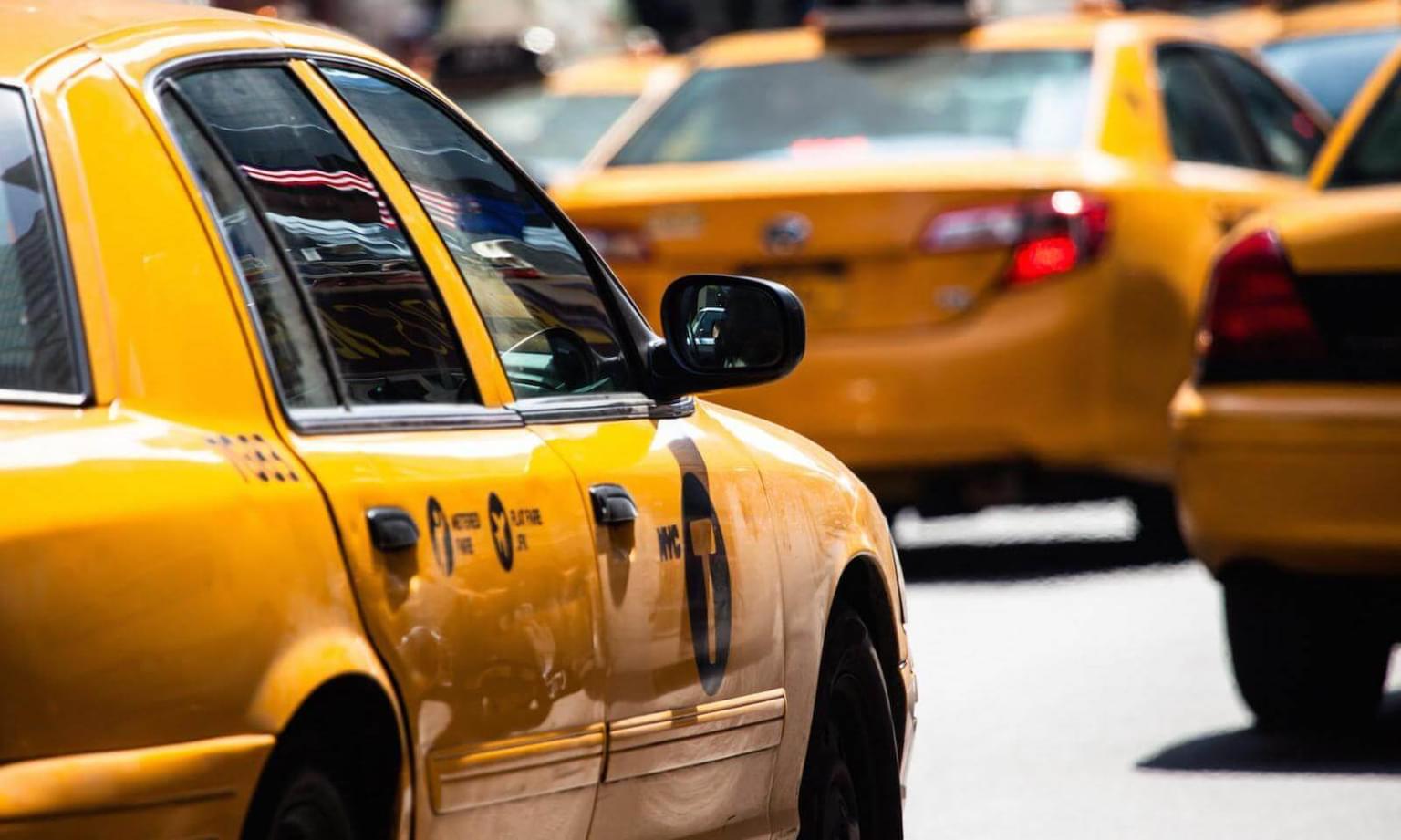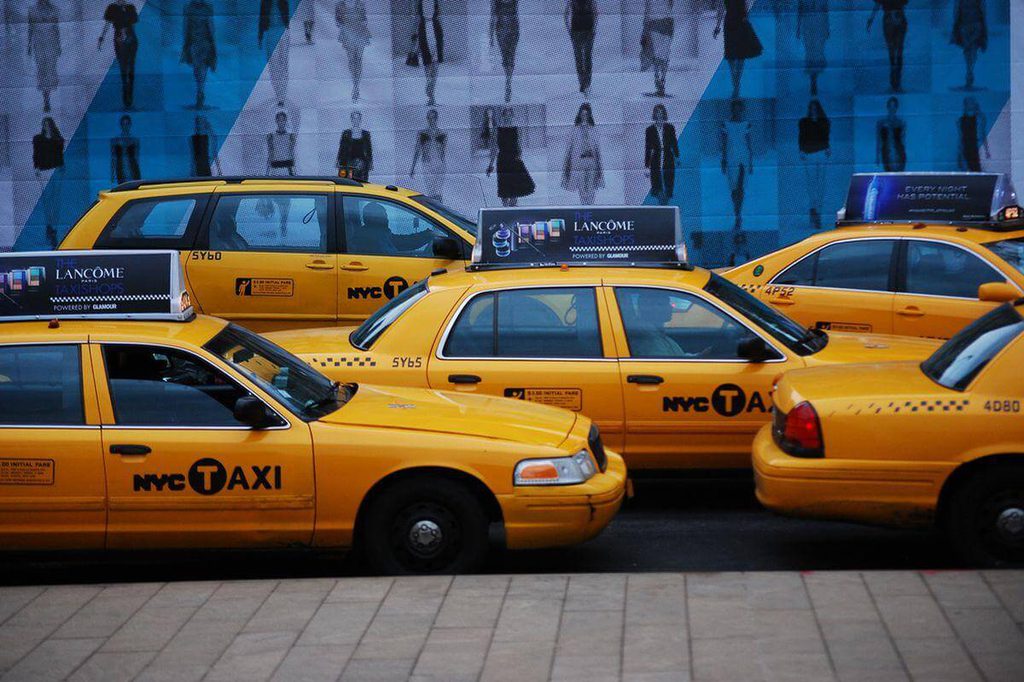
Two questions every city must ask in the age of autonomous taxis
Learn More

Devin Liddell & Eric Spiegelman

Devin Liddell
Principal Futurist

Eric Spiegelman
President
Jitney cabs–low-cost, unlicensed rides that operated as entrepreneurial hybrids between buses and taxis–first appeared in Los Angeles in 1914 and spread quickly across the United States. They were just as quickly regulated into extinction by cities at the behest of streetcar operators worried about this unanticipated competition. While they were operating, though, jitney cabs traveled on what we would describe as their respective city’s invisible “desire lines”–naturally occurring routes that emerge through passenger habits, not planning decisions.
These invisible desire lines exist in today’s cities, too, with Uber and Lyft now thriving in the gaps between a city’s traditional hub-and-spoke public transportation networks and people’s clear preference for point-to-point transit. Unlike jitney cabs, however, Uber and Lyft and other ride-hailing services are software-driven, which means those desire lines aren’t invisible anymore–at least to the ride-hailing services.
With access to real-time, citywide traffic data, taxibots will proactively reroute themselves based on current and emerging traffic patterns, eliminating congestion before it occurs.
In the future, city-run taxibot networks will reveal those desire lines with unprecedented clarity. With every taxibot an autonomous, roving node on the network, the city will generate extraordinary data about where, when, and presumably even why citizens move between one place and another. But unlike the scenario in which that data just lives on the servers of Uber, Lyft, and their comparatives, this data will give cities an entirely more profound opportunity: to design and manage truly adaptive infrastructure. This has the potential to dramatically reshape cities, subverting old hub-and-spoke network systems in favor of affordable point-to-point transportation that adapts to what’s happening street-by-street on the fly.
What will that look like? With access to real-time, citywide traffic data, taxibots will proactively reroute themselves based on current and emerging traffic patterns, eliminating congestion before it occurs. Taxibots will “hive” and disperse dynamically to offer traffic jam-less departures from sporting events and other civic gatherings that today clog streets and transit systems. Machine learning will enable one- and two-person taxibots to pick up commuters automatically from their homes, workplaces, and other frequent origins and destinations. Taxibots may prove so inexpensive to operate that they’ll replace school buses entirely, giving every kid curb-to-curb rides to school and back, paid for by school districts. Idle taxibots will even double as last-mile couriers during the day to generate revenue on behalf of taxpayers.
These are just some possible scenarios, but they’re all aligned with the future ability of cities to orchestrate city-run taxibots with other city-run systems and services. This will be a big shift for cities. Public transportation networks have typically been limited by cities’ capacity to manage complexity. That’s the real reason we have hub-and-spoke networks; point-to-point networks have simply been too complex to operate. But that has to change. At some point, solutions to more traffic cannot be more spaces for traffic to happen. We need smarter traffic. So while cities have historically concerned themselves with the hardware of cityhood, the future of cities is less about building and managing big public works projects and much more about generating and integrating layers of big data across systems and services. That is to say that software is the future of cityhood. That’s the shift that will enable citizens and cities alike to be their best selves–e.g., a city that isn’t paralyzed by its own traffic, and citizens free to contribute their skills and talents because they aren’t stuck in that traffic.
Taxibots will be the technology that makes that shift to truly adaptive infrastructure possible. But are cities ready to achieve this?
Taxibots will be the technology that makes that shift to truly adaptive infrastructure possible. But are cities preparing–through their people and partnerships–to achieve this? Because this will take top-flight software engineering as well as serious leadership talent, both with minds for connecting entirely new kinds of dots. Put another way, taxibots, the data they generate, and how we use that data will require a more collaborative model of interagency governance than what we have now. For just a few quick portraits of our current model of dysfunction, look at how cities, states, and the federal government address issues like illegal immigration and the legalization of recreational marijuana in disjointed, often oppositional ways. Governments will not have that option with taxibots. Instead, taxibots will require clear “handshakes” between different levels of government to work effectively. For example, a taxibot going from East Los Angeles to Santa Monica will often use the local roads of multiple cities, a state highway, and a federal interstate freeway, meaning that taxibot will need to handle inbound and outbound data on the go from each. That’s not a scenario with a high tolerance for bureaucracy’s red tape.
All of this might bring us right back to where we started: Taxibots have the potential to transform cities in extraordinary ways, but cities will have to choose to make them a reality. Truly adaptive transportation infrastructure that orchestrates the city as a whole will do amazing things. It just won’t create itself.
This article was originally published in Fast Company magazine.